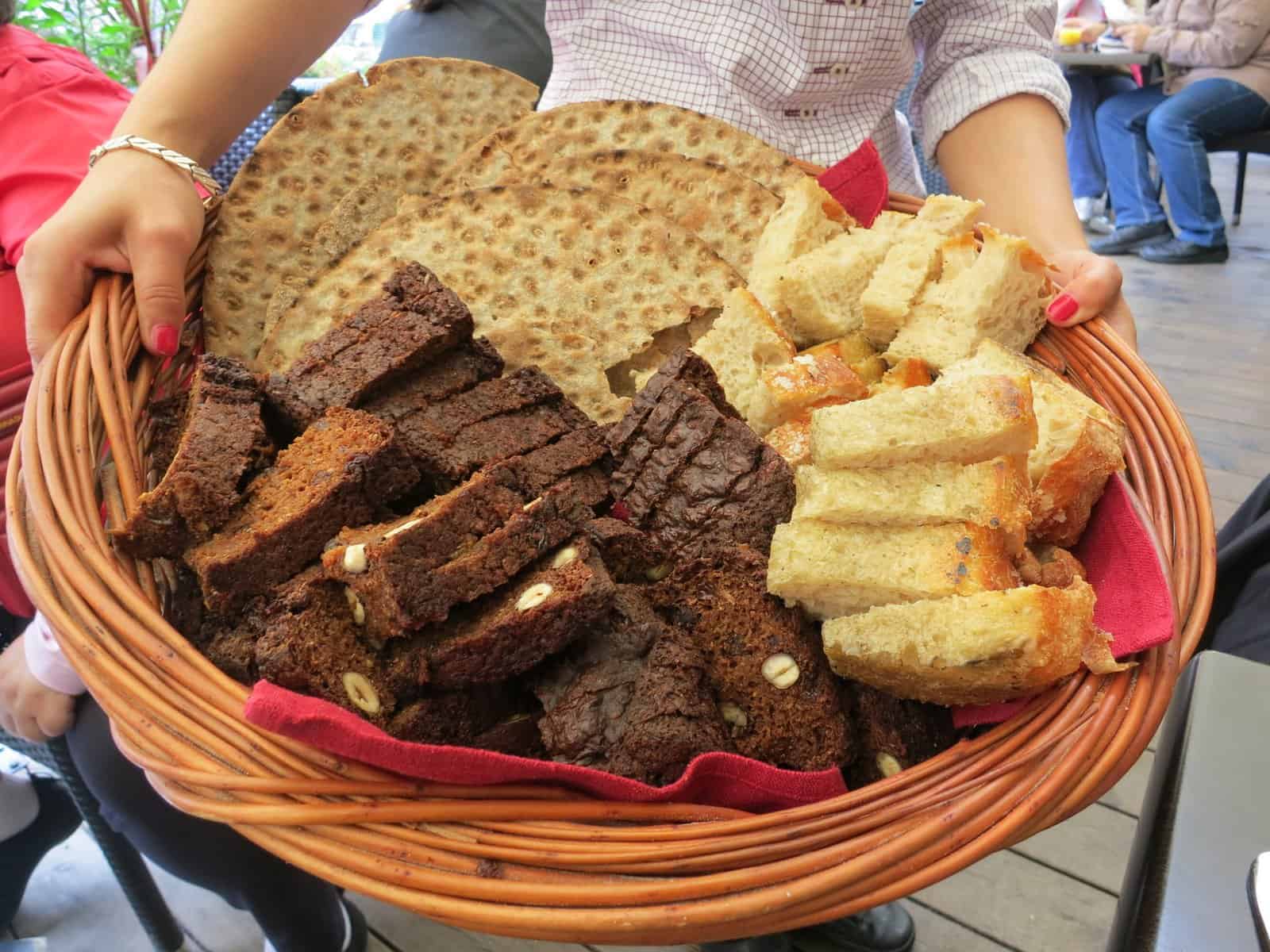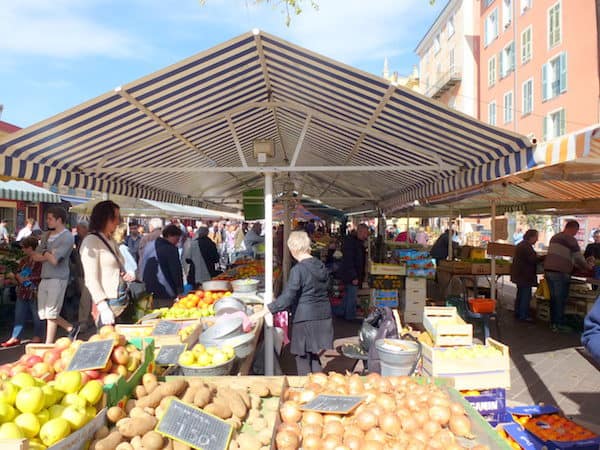Crémant D’Alsace: Love at First Sip

One of the many highlights of our European Waterways barge trip through the Alsace region of France was our introduction to Crémant D’Alsace.
It was love at first sip!
We were first introduced to the bubbly aperitif at a gourmet dinner on our barge. But we got a second taste at a private wine tasting (which included Crémant D’Alsace) at Domaine Pfister, one of more than 1,000 wine producers along the Alsace Wine Route (Routes des Vins D’Alsace). Acknowledged as the most popular wine route in France, this 60-year-old route winds through picturesque villages and vineyards set beside the foothills of the Vosges Mountains.

Admittedly, we favor sparkling wines. And our travels have allowed us to expand our repertoire beyond Champagne, which is often considered the gold standard. We’ve also fallen for Prosecco, Asti Spumante, Lambrusco and Franciacorta in Italy, and Cava in Spain.
What is Crémant D’Alsace?

In France, Cremant D’Alsace is a sparkling wine with delicate bubbles that is served both as an aperitif and as an accompaniment to food. Although crémant is typically more affordable than champagne, it is made using the same method (called méthode champenoise) that entails secondary fermentation in the bottle.
According to WineFolly.com, a wine education and appreciation website, crémant is produced in eight different appellations in France. Outside of France, Luxembourg is the only other country that can produce a wine with the crémant label. Thus, there are many different varieties of cremant to suit different tastes.
Additional requirements to be called an AOC (Appellation d’Origine Contrôlée) crémant: The grapes must be harvested manually; follow whole bunch pressing with minimal extraction; and the wine must be aged a minimum of nine months.
The Alsace region is the most popular supplier of crémant in France. Next in line: Crémant de Bourgogne (Burgundy), and Crémant de Loire.
After champagne, Crémant D’Alsace was the second sparkling wine to be consumed in France. This champagne alternative is most commonly made with Pinot Blanc grapes as a base but also can be a blend of other varietals including Pinot Gris, Riesling, or Chardonnay. Crémant Rosé is made using Pinot Noir grapes. The average alcohol content of a bottle of Crémant is between 10 to 11-1/2 percent.
Pairing Crémant D’Alsace with food

The official site of Alsace wines suggests that Crémant D’Alsace pairs well with every course, from aperitif to dessert:
- For a celebratory aperitif (no excuse needed), it pairs well with raw or cooked fish and caviar.
- Paired with a main course, it’s an ideal complement for chicken or other white meats.
- When in France, a cheese course is almost mandatory. It’s suggested that crémant goes well with floral rinds (such as Brie and Camembert); goat or sheep cheeses, and soft cheese such as Brillat Savarin.
- Yes, this very versatile, semi-dry wine also pairs with fruits, biscuits and cakes, like the regional specialty cake, kougelhopf.

Kir crémant: The crème de la crème

In my humble opinion, Crémant D’Alsace is best consumed as the base for a Kir Crémant apertif. This cocktail is a kissing cousin of a Kir Royale, which is made with champagne.
Steps to make a Kir Crémant at home:
1) Search for Crémant D’Alsace in your local wine store. The wine isn’t always easy to find and may have to be ordered from a distributor. Although the prices are more favorable than champagne, they are probably twice as expensive as when purchased in Alsace. You can probably find a decent bottle for about $20, making it less expensive than champagne but more expensive than Prosecco.
2) Purchase Crème de cassis, a dark red blackcurrant liquor that comes from Burgundy. Our favorite brand is Gabriel Boudier Crème de Cassis de Dijon, which happens to come in a beautiful bottle. Since you only will use a small amount at a time, invest in a good brand that looks smart on your bar.
3) Pour a generous splash (to taste) of Crème de cassis in a flute glass. Experts say that crémants are best served in narrow glasses that minimize exposure to air and preserve its aroma longer.
4) Top it with Crémant D’Alsace.
5) Toast: A Votre Santé
Photo credits: Jerome Levine
Save to Pinterest!







Great juice and good article! I’ve not had my fill yet. But I still have a few more days in Alsace!
Lucky you! Can’t wait to read about your trip to Alsace.
I always learn something new on your blog! I’ve never heard of Crémant D’Alsace but it’s now on my must-try list!
I learn something new each time I travel:-)
Oh my do I love sparkling!! This was so informative, thank you!
Perfect for toasting a special occasion!
At around 11% alcohol, Crémant D’Alsace sounds very sippable — meaning you can enjoy more, without feeling the effects :-). It probably makes a great summer sipper! Though it’s probably hard to find in Victoria, Canada, where we live. Maybe a visit to Alsace is in order to try it out? :-).
Thanks for sharing your experience and the unique recipe. We will certainly have to snoop out a bottle to test the recipe for ourselves. Cheers!
Maybe when you come to New York? 🙂
I am a wine lover but am not particularly a fan of champagne or sparkling wine. I am sure I would try cremant d’alsace, though, if given the opportunity. Thanks for expanding my knowledge of this alternate sparkling wine with its delicate bubbles!
The world of wine is so vast and diverse that there’s something for everyone!
Irene, I think we are cut by the same cloth! I’ve been to many wine destinations that have been “love at first sip!” Would love to visit Alsace and try that Crémant D’Alsace.
I think you would love Alsace!
Though I’ve never heard of Cremant D’Alsace before, this post has me craving it! What a versatile but special wine! Hoping I can find a bottle somewhere near me.
Let me know when you find it:-)
When we lived in Basel, Switzerland (situated just across the border from Alsace), Cremant D’Alsace was a favorite pairing with many of the seasonal foods of the region, from tarte flambée to kougelhopf, in its sweet or savory versions. Your article makes me homesick for these yummy flavor combinations!
Don’t get me thinking about tarte flambee—the next best thing to pizza!
Okay, I’m ready to join you for a toast. Let’s do it!
We just ordered some from Wine.com!
Crémant D’Alsace sounds intriguing. I’ll be looking for it now.
I should purchase a few bottles so I can host a tasting for everyone wh hasn’t had the pleasure!
I LOVE the Alsace Wine Route. These bubblies are in a class of their own. Thanks for the Kir Cremant recipe, too (although I did get a kick out of the first step: Search for Kir crémant in your local wine store!) Pinned!
I found one bottle in a store in Manhattan but not in our town!
You certainly know your wine! I have had champagne and asti spumanti. This Cremant D’Alsace sounds awesome, too. We will be in Paris the whole of next week. Since we don’t have enough time, we don’t know which nearby wine valley to spend time on.
How lucky you are to be headed to Paris! If you are so inclined, you should be able to taste both Creme D’Alsace and Creme de Bourgogne.
Okay sometimes I worry about myself. . .as it is not quite 8 a.m. and I am reading your post and my mouth is watering. . .I would like to believe it is because you have written such a tantalizing piece about a new bubbly and not that I am showing alcoholic symptoms! You’ve got me hooked though – must give it a try!!
Let me know if you find it in Greece!
I only drink sparkling wines, so I know I’d love Crémant D’Alsace! I’ll definitely seek it out next time I’m in France!
Nice to meet a kindred spirit!
Who doesn’t love a good glass of wine? I always learn something new from your blog. Thanks for sharing!